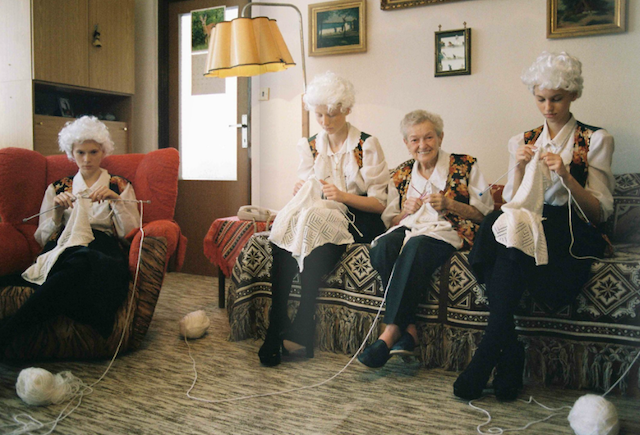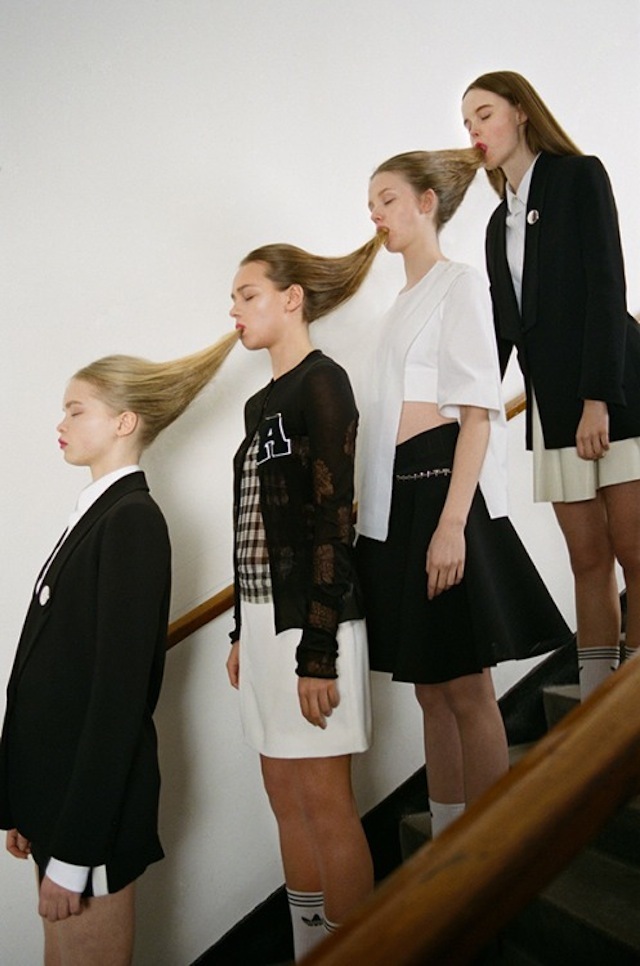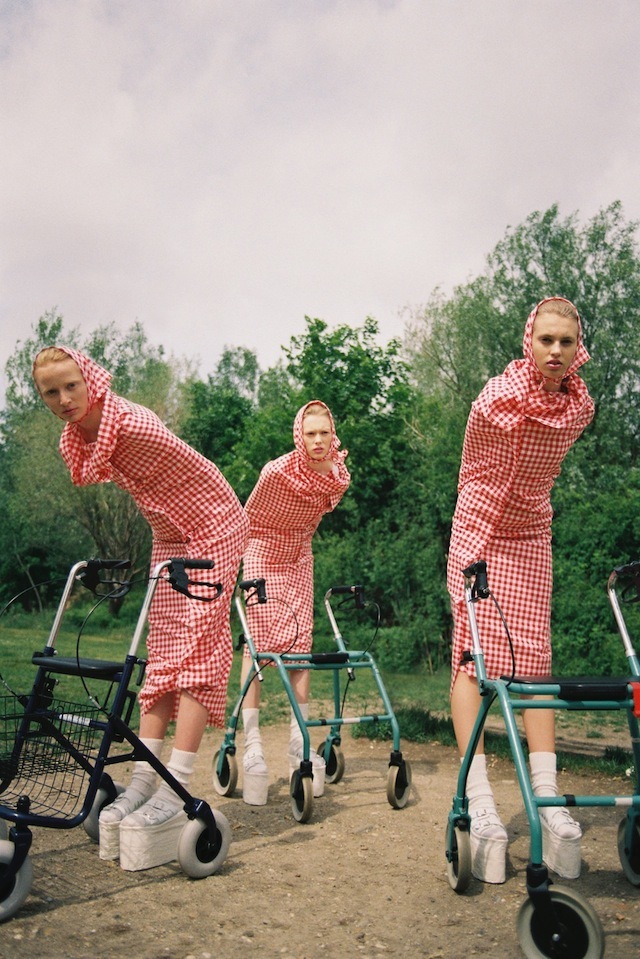
All images courtesy of Michal Pudelka.
I studied abroad in Prague during college. After the excitement of smoking indoors and underage binge-drinking in the Czech capital wore off, I started to get antsy. A friend told me about a photographer named Michal Pudelka who was based in the neighboring country Slovakia, and said the young artist was looking for some help on his now-defunct zine, Anonym. At that point, anything sounded better than continuing to ruin my liver, so I jumped at the opportunity and did a little bit of editing for the arts and culture mag. While the interviews and stories were great, what made Anonym stand out were Pudelka’s photos.
Videos by VICE
His aesthetic felt like jumping into a funhouse designed by Guy Bourdin that was located in some bleak, Eastern Bloc–era carnival. Though his photos have plenty of color and humor, there’s a gloomy undercurrent with themes of body mutilation, decay, and nightmare-ish surrealism.
A few years have passed, and unsurprisingly Pudelka has been shooting covers for sleek fashion mags like AnOther, signed a contract with powerful agent Katy Barker, and was picked to shoot the spring ad campaign for the iconic Valentino. Though he is now based in London and has an assistant and crew working with him, Pudelka’s creative compass and mesmerizing aesthetic have remained consistent. I reached out to the 24-year-old to alk about the rapid growth of his career.

‘Anonym’ Issue 12 editorial

‘Anonym’ Issue 13 editorial
VICE: I’ve known you for a few years now, though I never learned much about your background. How did you get interested in photography—what kind of culture was around in your hometown of Bratislava, Slovakia?
Michal Pudelka: It’s not very easy for a gay guy to grow up in a post-communistic country where access to information is suddenly open but the minds of the people are still closed. I was judged for being different for as long as I can remember, so I closed myself into my own world of creativity and inspiration. One of my biggest inspirations is still communistic architecture and art—the color combinations, the materials, the textures. I was always working on drawings and paintings, wanting to be a fashion designer for many years. Then, when I finally got to Parsons in Paris, I fell in love with taking photographs during my foundation year. I started with self-portraits and it just made sense to mix it with fashion, since I always had a passion for art of dressing.
How did your career jump from making Anonym to all these high-profile fashion campaigns?
My big break was definitely meeting my agent, Katy Barker. She [helped] photographers like Terry Richardson and Craig McDean. So from the minute we signed a contract, I knew I’d work in high fashion. She is a gladiator and when she wants something, she just goes for it no matter what. Actually, the first sentence she ever said to me was that I would be perfect for Valentino, and here we are.
How would you escribe your photos to someone who’s never seen them before? What are the biggest themes that connect your work?
I would describe them as a surreal mash-up of my personal feelings and coincidences of everyday life that interest me. I love to play with color and color combinations.
Your photos are funny and wry, but sometimes I feel like there’s a darkness underneath. Do you consciously try to find humor in the dark settings?
I love to look for humor in unusual situations. I think that’s how life works—to expect the unexpected. Many people get confused that my work is very happy because of all the color, but that’s just a camouflage. I use my work mostly to filtrate the negative out of me so I can move on. The fact that sometimes it’s presented in pink dress is the irony of it, obviously. I was always very interested in mutilations and different states of mind. It is still something that fascinates me. Also, my mom is a doctor. Growing up, I spent lot of time in hospitals. Many people don’t like hospitals, but I actually feel at home there.

‘Transhumanism’ editorial

Can you tell me about your interest in body doubles and repetition, in both colors and in people? One of my favorite things about your work is that it reminds me of looking in a funhouse mirro where you see a million versions of a body but they’re all slightly off.
My interest in doubles and repetition started with a fascination with the behavior of social groups. I noticed that in different groups people tend to look vey much alike, wear the same clothes, use the same words. To me, it is slightly like losing our own identity just for being part of some group.
What about your focus on women—is there a reason you typical shoot women over men?
I think that, in general, women are more beautiful creatures than men. Also, shooting female models gives bigger space for realizing my visions without coming across as gay—which usually happens when you are being more creative with male models.
When do you come up with your best photo ideas—during long walks, in the shower, while dreaming?
It really depends, sometimes I’m in the mood to create, so I sit down and draw ideas. Sometimes, something pops into my head while watching Desperate Housewives or The Simpsons. Many times, I also dream that I’m shooting a shoot that I didn’t do in real life. So when I get up, I write it all down.

Editorial for ‘AnOther’

‘Anonym’ 12 editorial
Follow Zach on Twitter.
More
From VICE
-

Allmodern -

-

Collage by Vice -

Collage by Vice
